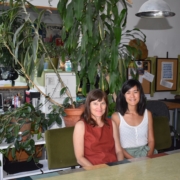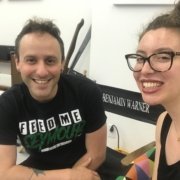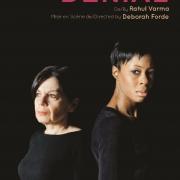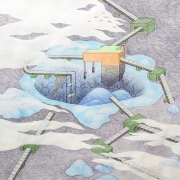Artists Illuminated – Venus Lukic
Venus Lukic was born in Toronto and lived in South Korea following her BFA at OCAD in 2010. She has been living in Montreal since 2017. She is an interdisciplinary artist who is mainly focused in painting and conceptual art practice. Her work focuses on memoir, material exploration, and challenging the viewers expectation.
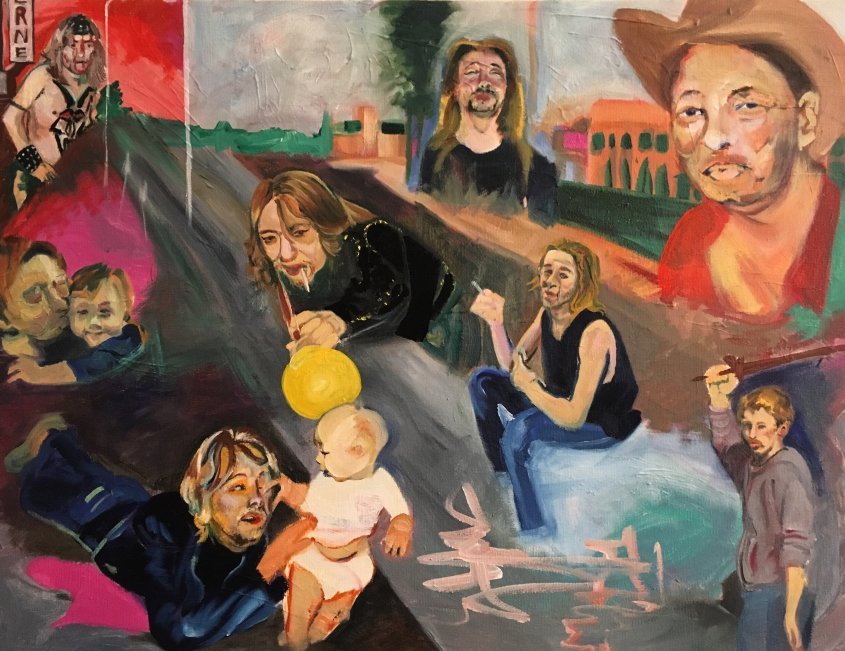
Check out Venus Lukic’s website here!
What attracted you to painting? Are you currently exploring any other media?
I think I always assumed that an artist had to be a painter. That’s just the narrative I got when I was younger. My grandmother collected paintings and posters as she traveled around the world as a travel agent. She was once an amateur painter but never developed her talent for that further. I am always moving beyond painting to the book, the room, or the concept, but I have recently come back to painting again for some specific research-based work.
How do you explore the theme of collective consumerism in your work? What compels you to deal with this especially in your works?
My work, Observer Perspective, is based on the way in which women are able to view themselves, and the limitations that we face. It is influenced in part by how women have been depicted throughout the history of painting. It is also about the materiality of painting skin on felt, and the interactivity of the work itself. The women depicted in the piece were sourced from an adult website online community which promotes strong alternative (tattooed and pierced) women engaging in a different kind of photographic eroticism (contemporary pin-up) to the standard style of ‘pornography’. Most of the women on this site have tattoos and piercings, and clients are able to contribute financially to the women’s individualized interests. They are depicted as independent women with creative control, and they get naked and potentially challenge the viewers idea of beauty. The key concept of this work is that women can see and curate much of themselves, but there are certain angles where they cannot see themselves except through a lens or a reflection, and this part signifies one’s true vulnerability. I wanted to bring this feeling of vulnerability to the viewer in a fun way.
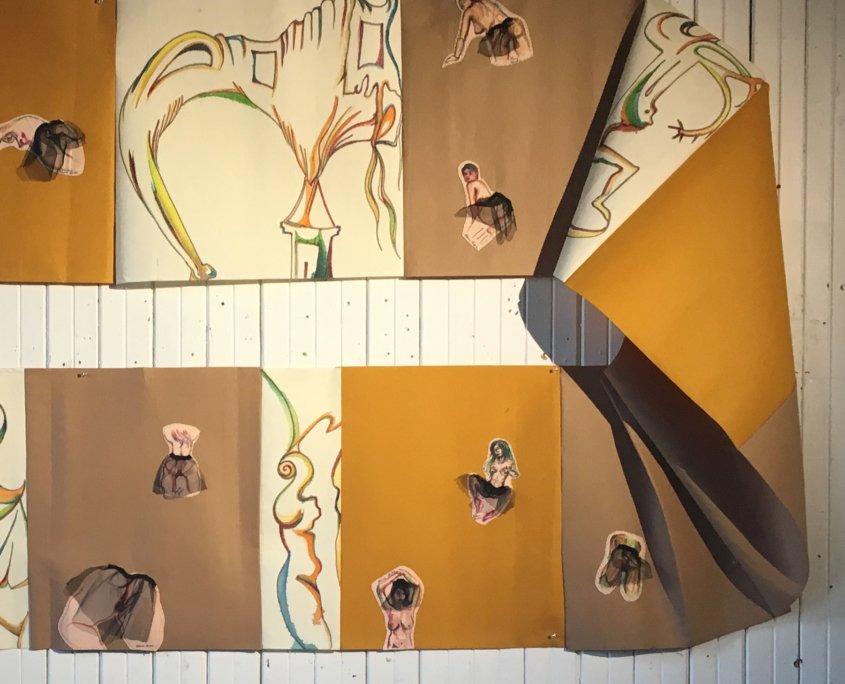
“Observer Perspective”, Venus Lukic.
What are some of the sources of inspiration for you?
Sources of inspiration for me are making connections such as suddenly having a new perspective based on having that ‘key’ piece of the puzzle. Lately, I had been working with the concept of death and passing through other’s lives, passing in a queer sense of the word, and then also existing and experiencing life. I deal with memoir in my work and like to engage with the ‘institution’ of education. Everyday consumerism is something which affects me and I have desired minimalism for a few years now. In the past year I was exploring the connection I have to the ‘aura’ of objects and attempting to create paintings of the objects as a way to dissolve my connection to them. This led me back to a figurative-objective focused painting practice within the past year, however, I allowed abstraction to invade several of these paintings (like doodling on my own work) as a reference to the physical and mental clutter which exists in the periphery of the artists experience.
One artist whom I admire is Kim Beom, a Korean conceptual performance and installation artist. I enjoy his sense of the absurd and his investigations into systems of education. Having great mentors and teachers at OCAD University (2006-2010), and being exposed to so many local and international artists while living and creating abroad has also had a specific influence on my interests and art-making process.
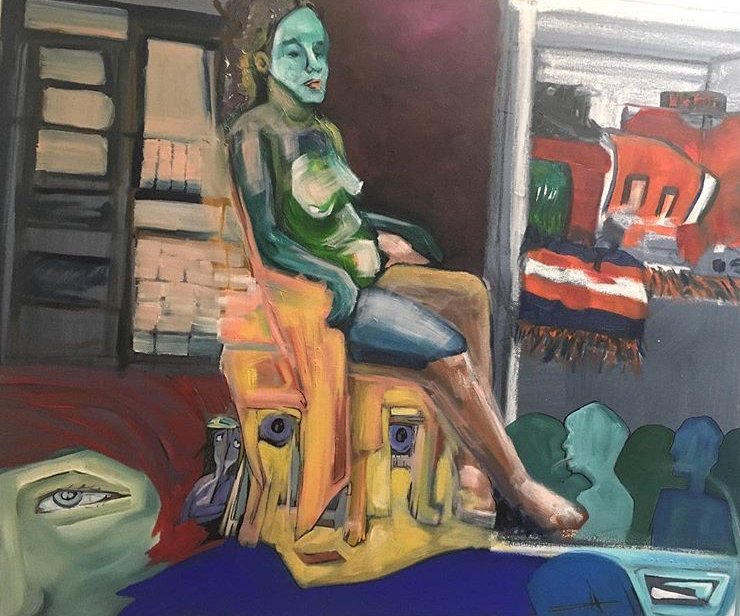
“Ula dans La Rue”, Venus Lukic, 2018.
In your interview with Leela Bear, you mentioned collaborating with other artists could bring new or different memories of a place into your work. Could you talk about how that came through in your piece Estimated Line of General Happiness and Enjoyment Since Moving Abroad (To Korea in 2010) For the First Time?
In Estimated Line of Happiness and Enjoyment Since Moving Abroad (to Korea in 2010) for the First Time, I allowed other artists and participants to engage with my personal timeline and in doing so, bring their own experience to my work. Before the artist-participants engaged in the work, it was explained to them that they should consider the specific time-stamps I had included, and to create their ideas based on how they felt at those times in their lives, and who was influencing them. I used the imprints of male and female busts to describe my own fluctuating experience of influence at those times, paired with the line itself which approximately ‘measured’ the level of happiness I had remembered experiencing.
Could you talk about your experience at Art Space Jang Residency? Were you part of other residencies in South Korea?
I really enjoyed the Art Space Jang Residency program. I was really able to bring closure to my work in Korea in a lot of ways. The Da Vinci theme really allowed me to focus on media exploration and collaboration in a way that had been inspired by my sojourn in Korea to start with back in 2010. I was lucky to be invited to join a few local international residency programs during my stay in 2010, 2011, 2014 and 2016. During my time in Daejeon, I also showed work as a member of the Daejeon Arts Collective.
Are there any parallels or comparisons you could make between your experiences within artist milieus in South Korea, and those here in Montreal?
One thing which I think is common in both areas is the importance of community art and projects in the local neighbourhoods, thereby making art inclusive and personal while engaging young minds. Coincidentally, in both, I don’t speak the language well, so I remain a bit of an outsider, or rather, an insider to the foreigner statistic.
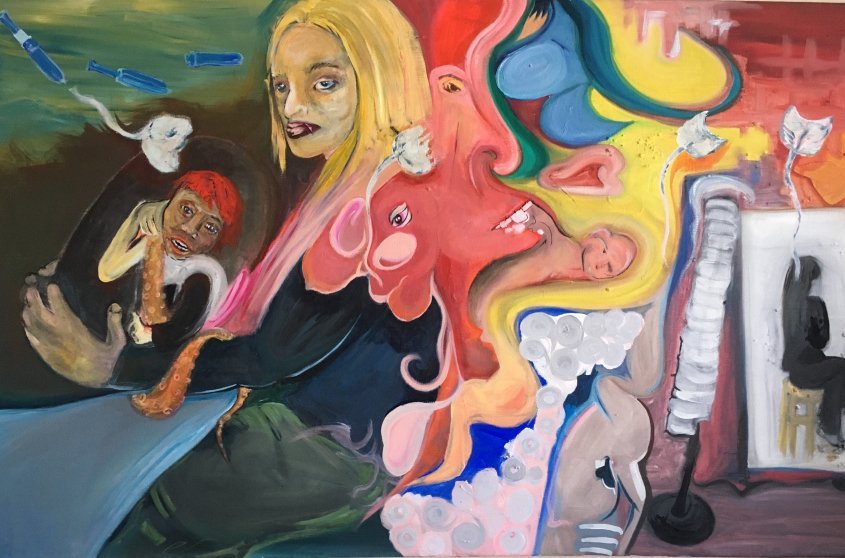
What are some tips you might give to other artists pitching their art to galleries?
I would say some obvious things I think, make sure you check the website and visit the gallery in person for an opening, and consider if your work at least sort of fits or pushes the boundary of what the gallery usually shows, as they probably have a mission statement or mandate which dictates what they will show. And don’t take it personally if they don’t want to show your work or don’t seem to like it. Also, check if they have a specific protocol to submit work, for example by mail, images on a disk, etc.
If you’ve worked with both commercial galleries and artist-run centres, could you share some of your experience, benefits, or downsides you find in one over another?
Most of the time, commercial galleries cost a lot for a short time, and you will still have to schedule someone (yourself) to monitor your exhibit for the duration of it. Because this is more of a space rental, you may have more creative control over the theme or content of the exhibit. However, the gallery may also have a very narrow idea of how to display the work which, in my case, is a major downside as my work changes and is very based in material exploration, and installation can be important.
My understanding and experience with artist-run centres is that they may have access to funding, meaning that the exhibition schedule is decided quite far in advance with little room for flexibility, unless that is part of their mandate. In many cases it is also possible to receive an artist and/or material fee for exhibition, and they are more accommodating to how contemporary art is experienced with a general focus on education.

“Estimated Line of General Happiness and Enjoyment Since Moving Abroad (To Korea in 2010) For the First Time”, 10 meter scroll, Venus Lukic, 2016.

